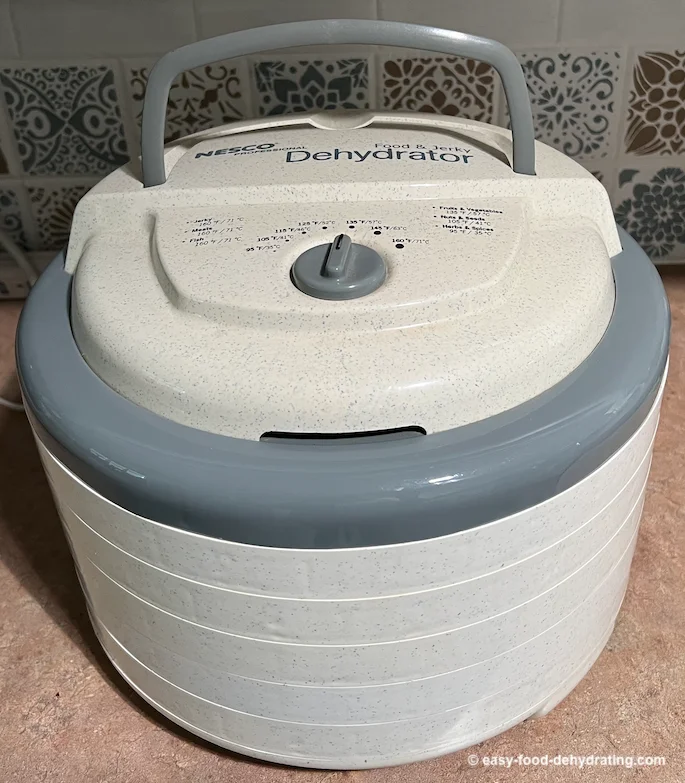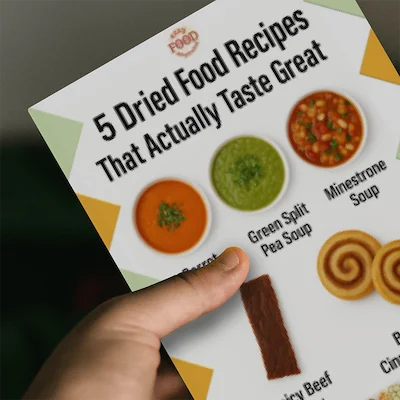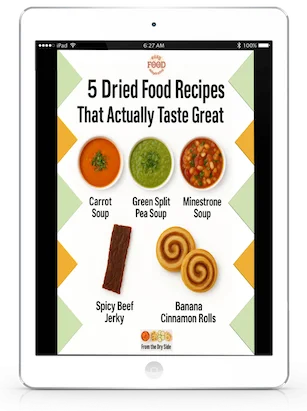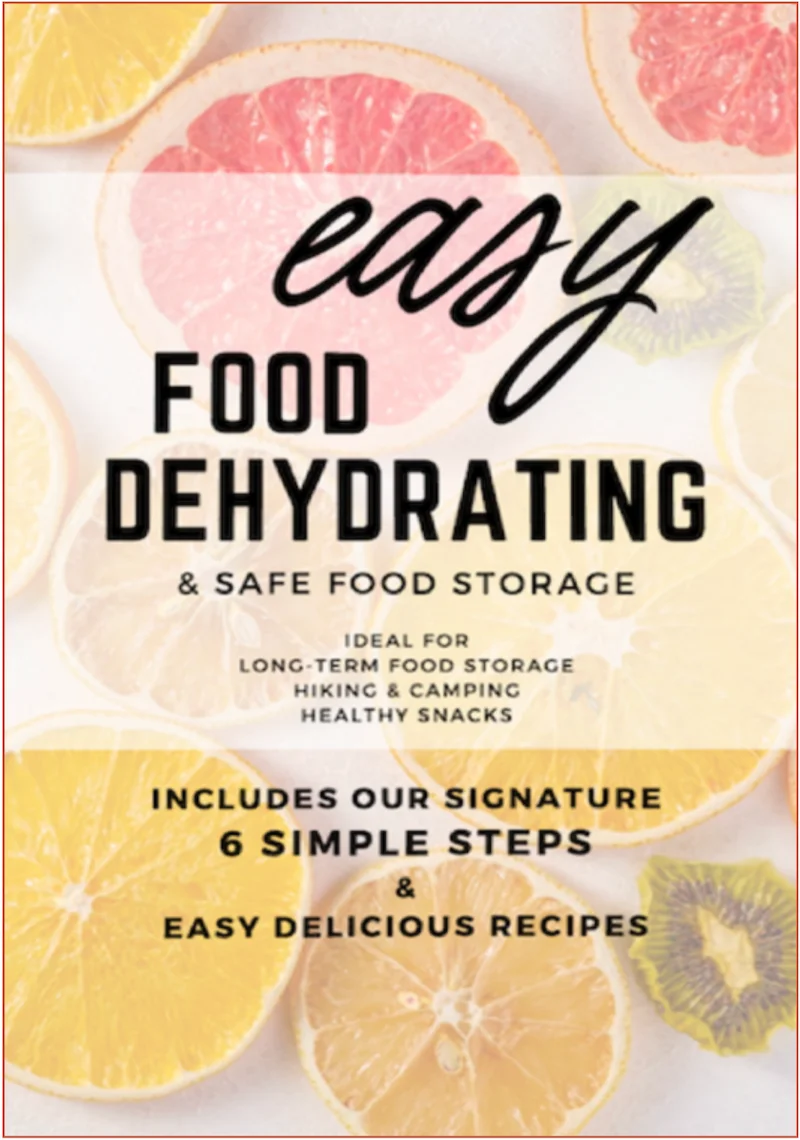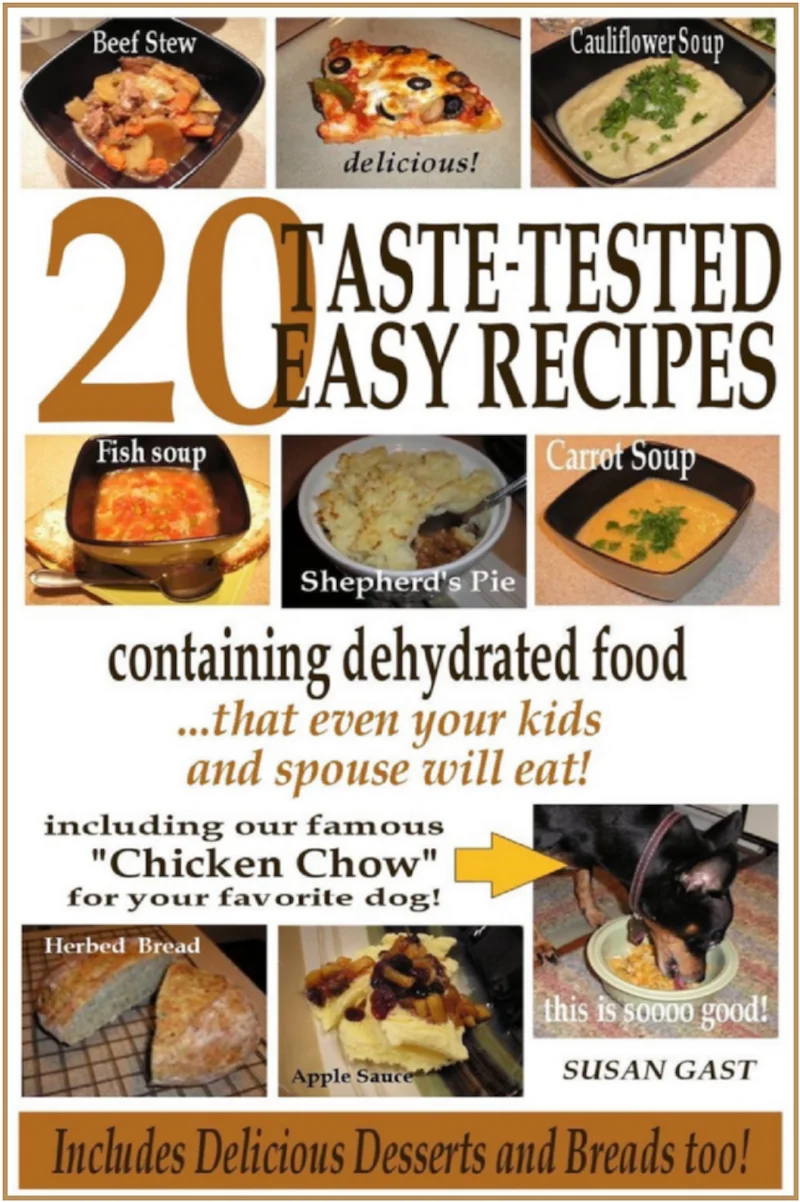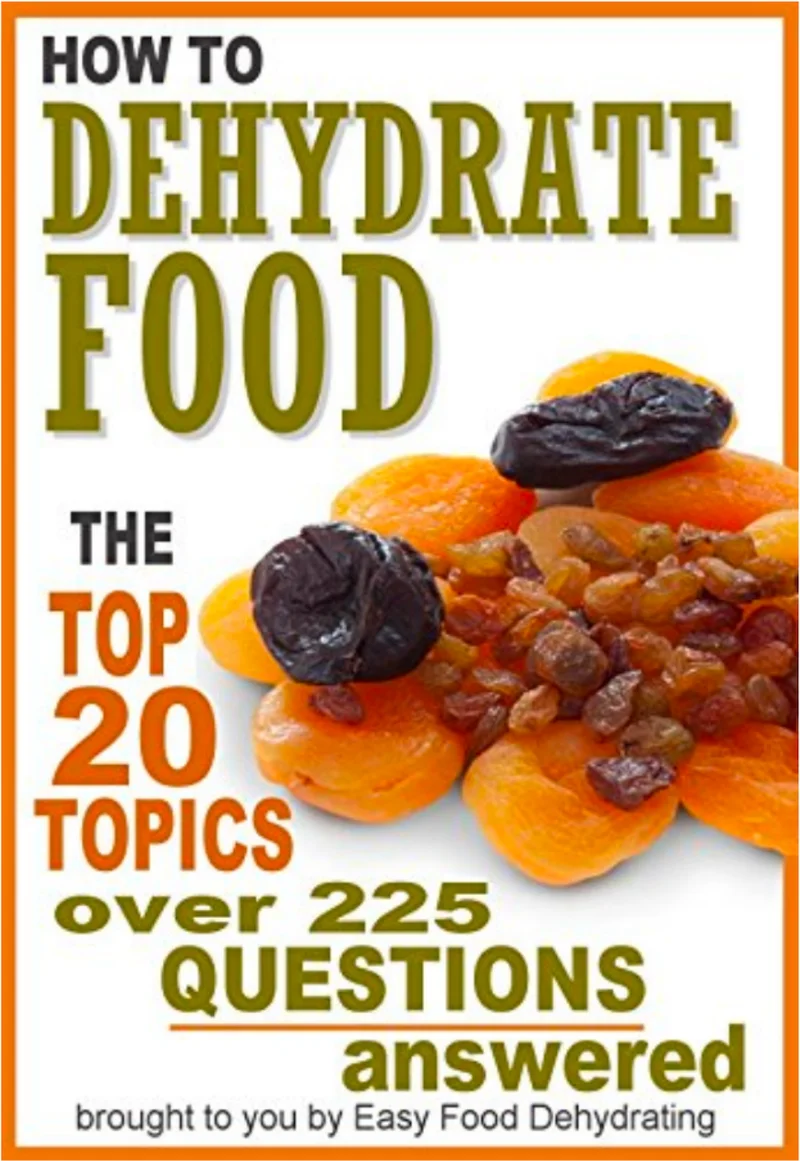What We Mean by “Dehydrate”
Here at Easy Food Dehydrating, “dehydrate” always means using an electric food dehydrator — the easy, reliable way to dry food at home.
- Home
- Food Preservation Techniques: 6 Easy, Effective Methods
6 Essential Food Preservation Techniques
for a More Self-Sufficient Life

Learning food preservation techniques is one of the smartest ways to cut grocery costs, reduce food waste, and feel confident about your pantry supply. From canning and freezing to dehydrating, pickling, fermenting, and smoking — these time-tested methods let you enjoy fresh flavors long after harvest season ends.
✅ Quick Answer: What are the main food preservation techniques?
The six most effective food preservation techniques are canning, freezing, dehydrating, fermenting, pickling, and smoking. Each method helps extend shelf life, reduce waste, and maintain nutrition, making it easier to keep a safe, sustainable food supply at home.
Whether you’re stocking up for everyday savings or building resilience for emergencies, preserving food at home gives you independence, peace of mind, and a kitchen full of ready-to-use ingredients.
 Home canning in a kitchen
Home canning in a kitchenWhy Food Preservation Still Matters Today
Definition and Importance
What is food preservation? Food preservation means keeping food safe and fresh for a long time. This helps you store extra food, reduce waste, and always have something to eat.
Why is it important for sustainability and self-sufficiency? Preserving food helps you waste less and shop less often. It also means you can rely on your own food supply, especially during emergencies. These emergencies can take various forms:
- Natural disasters: Hurricanes, floods, earthquakes, or severe storms can disrupt food supply chains and make accessing fresh food difficult.
- Power outages: Extended blackouts can cause refrigerated and frozen foods to spoil quickly.
- Economic crises: Job loss, economic downturns, or sudden inflation can make it challenging to afford fresh food regularly.
- Supply chain disruptions: As seen during the COVID-19 pandemic, unexpected events can lead to food shortages or limited access to grocery stores.
- Personal emergencies: Injury, illness, or unexpected financial setbacks might temporarily prevent regular shopping trips.
- Seasonal scarcity: In some areas, certain foods may be unavailable or expensive during off-seasons.
- Transportation issues: Car breakdowns, fuel shortages, or public transit disruptions could hinder your ability to reach food sources.
By preserving food, you create a buffer against these potential emergencies, ensuring you have access to nutritious food even when external circumstances are challenging. This practice not only promotes self-sufficiency but also contributes to overall household resilience and food security.

6 Proven Food Preservation Techniques You Can Start Now
Overview of Different Methods:
- Canning: Sealing food in jars and heating them to kill germs.
- Freezing: Keeping food at very low temperatures to stop bacteria.
- Drying: Removing water from food to stop bacteria, yeast, and mold.
- Fermenting: Using good bacteria to turn sugars into acids, preserving the food.
- Pickling: Soaking food in vinegar or salty water to preserve and flavor it.
- Smoking: Using smoke to flavor and preserve food.
Pros & Cons: Which Preservation Method Fits Your Lifestyle?
CANNING
FREEZING
DRYING
FERMENTING
PICKLING
SMOKING
Pros & Cons: Which Preservation Method Fits Your Lifestyle?
CANNING
FREEZING
DRYING
FERMENTING
PICKLING
SMOKING
CANNING
Canning: Seal Freshness in a Jar
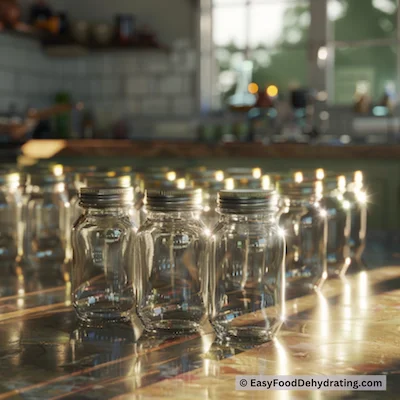
Canning Basics: Why This Method Never Went Out of Style
What is canning? Canning is sealing food in jars and heating them to kill germs. This keeps the food safe and fresh for a long time.
Historical context and modern relevance: Canning started in the early 1800s to provide safe food for soldiers. Today, it's still popular for preserving seasonal produce and homemade meals.
Water Bath vs. Pressure Canning — Key Differences Explained
Water bath canning: Good for high-acid foods like fruits and pickles. It involves boiling jars in water.
Pressure canning: Needed for low-acid foods like vegetables and meats. It uses a pressure canner to reach higher temperatures.
Beginner’s Guide: How to Can Food Safely at Home
Detailed instructions for both water bath and pressure canning:
Water Bath Canning:
- Sterilize jars and lids.
- Prepare the food and fill jars, leaving some space at the top.
- Remove air bubbles and wipe jar rims.
- Place lids and screw bands on jars.
- Submerge jars in boiling water, making sure they are covered by at least an inch of water.
- Boil for the recommended time.
- Remove jars and let them cool for 12-24 hours.
Pressure Canning:
- Sterilize jars and lids.
- Prepare the food and fill jars, leaving some space at the top.
- Remove air bubbles and wipe jar rims.
- Place lids and screw bands on jars.
- Place jars in the pressure canner with the recommended amount of water.
- Lock the lid and heat the canner, letting steam escape for 10 minutes.
- Close the vent and bring the canner to the required pressure.
- Process for the recommended time.
- Let the canner cool and depressurize before opening.
- Remove jars and let them cool for 12-24 hours.
Canning Safety Tips: Mistakes You Must Avoid
- Always use tested recipes and follow instructions.
- Sterilize jars and lids to prevent contamination.
- Don't overfill jars to avoid spillage and bad seals.
- Check seals after cooling and refrigerate any unsealed jars.
Trusted Canning Guides and Resources:
DEHYDRATING
Dehydrating: Lightweight, Long-Lasting Storage
Why Dehydrating Food Still Works Today
Benefits of drying food: Drying is an old method that saves space and weight. It keeps most nutrients and can make flavors stronger.
Types of foods suitable for drying: Fruits, vegetables, herbs, and meats are great for drying. Popular dried foods include apples, tomatoes, herbs, and jerky.
3 Simple Drying Methods: Sun, Oven, or Dehydrator?
Sun drying: Good for hot, dry climates. Spread food on trays and cover with mesh to protect from bugs. Turn food regularly.
Oven drying: Use a low oven temperature (140°F) and place food on racks. Keep the oven door slightly open to let moisture escape.
Using a food dehydrator: A dehydrator gives consistent heat and airflow. Follow the manufacturer's instructions.
💡 Tip: Outside the U.S.? Most dehydrating temps here are listed in Fahrenheit - use our quick converter to see the Celsius equivalent for your machine.
Storing & Rehydrating Dried Foods Made Simple
Proper storage methods for dried foods: Store dried foods in airtight containers in a cool, dark place. Use vacuum-sealer bags or Mason jars with oxygen absorbers and desiccant packets for longer storage.
How to rehydrate dried foods for use: Soak dried foods in water or broth until they return to their original texture. Use them in soups, stews, and other recipes.
FERMENTING
Fermenting: Boost Flavor & Gut Health

What Is Fermentation and Why Is It Healthy?
What is fermentation? Fermentation is when good bacteria turn sugars into acids, gases, or alcohol. This preserves food and adds nutrients and flavor.
Health benefits of fermented foods: Fermented foods are rich in probiotics, which help your gut and immune system. They also have vitamins, minerals, and enzymes.
DIY Sauerkraut, Yogurt & Kefir — Step-by-Step
Basic steps for fermenting vegetables:
- Clean and chop vegetables.
- Make a brine solution (water and salt - see ratios below).
- Submerge vegetables in the brine.
- Use a weight to keep vegetables under the brine.
- Cover the container with a cloth to allow airflow.
- Store in a cool, dark place and check regularly.
Making homemade yogurt and kefir:
- Yogurt: Heat milk to 180°F and cool to 110°F. Add a yogurt starter and keep at 110°F for 6-12 hours.
- Kefir: Add kefir grains to milk and let it ferment at room temperature for 24-48 hours. Strain the grains and enjoy.
💡 Tip: Outside the U.S.? Most dehydrating temps here are listed in Fahrenheit - use our quick converter to see the Celsius equivalent for your machine.
Easy Brine Water to Salt Ratio: One rule of thumb is to use 1-3 tablespoons salt per litre (4 cups) of water.
The easiest way to calculate the exact amount of salt needed is this
simple metric calculation: To create 3% brine in 1000 milliliters (1 liter) of water: 1000 x . 03 = 30.
Source: Google
Fermentation Storage: Keeping Batches Fresh & Safe
Ensuring safe fermentation: Use clean equipment and good ingredients. Watch the process and throw out any batches with bad smells or mold.
Storing fermented foods: Store fermented foods in the fridge to slow down fermentation and keep them fresh. Use airtight containers.
FREEZING
Freezing: The Easiest Way to Preserve Food

Why Freezing Protects Flavor & Freshness
Benefits of freezing food: Freezing is easy and keeps food tasting fresh. It helps you store seasonal produce, bulk buys, and leftovers, reducing waste.
Types of foods suitable for freezing: Most foods can be frozen, like fruits, vegetables, meats, seafood, dairy, and prepared meals. Some foods, like lettuce, don't freeze well.
Having noted that seafood can be frozen, it's best not to do that IF you are thinking of dehydrating it later.
Freezing Like a Pro: Blanching, Packing & Storage Hacks
Blanching vegetables before freezing: Blanching means boiling vegetables briefly and then cooling them in ice water. This keeps their color, texture, and nutrients.
Proper packaging and storage tips:
- Use airtight containers or freezer bags to prevent freezer burn.
- Label packages with the date and contents.
- Arrange items in a single layer to freeze quickly.
- Keep the freezer at 0°F or lower.
💡 Tip: Outside the U.S.? Most dehydrating temps here are listed in Fahrenheit - use our quick converter to see the Celsius equivalent for your machine.
Safe Thawing: Best Ways to Use Frozen Food
Safe thawing methods: Thaw frozen foods in the fridge, under cold water, or in the microwave. Don't thaw at room temperature to avoid bacteria.
Best practices for using frozen foods: Use frozen foods within their recommended times for best quality. Add them to recipes directly from the freezer or after thawing.
PICKLING
Pickling: Tangy Flavor Meets Long Shelf Life

What Is Pickling and Why Use It?
What is pickling? Pickling means soaking food in vinegar or salty water. This keeps the food fresh and adds a tangy flavor.
Benefits of pickling: Pickling makes vegetables and fruits taste great and keeps their nutrients. It also provides probiotics.
Quick Pickles vs. Traditional Pickles — Which Works Best?
Quick pickling vs. traditional pickling:
- Quick pickling: Soaking food in vinegar for a short time, usually a few hours to a few days. Good for small batches.
- Traditional pickling: Fermenting food in brine for several weeks. This gives deeper flavors and longer storage.
Step-by-step guide to pickling vegetables:
- Clean and chop vegetables.
- Make a pickling solution (vinegar, water, salt, and spices - see ratios below).
- Pack vegetables into sterilized jars.
- Pour the pickling solution over the vegetables.
- Seal jars and store in the fridge for quick pickles or in a cool, dark place for traditional pickles.
Quantities of ingredients needed for making a pickling solution:
- 1 cup water
- 1 1/3 cup white vinegar
- 1/3 cup granulated sugar
- 2 tablespoons kosher salt
Source: Google
How to Store and Use Pickled Foods in Meals
Proper storage methods for pickled foods: Store quick pickles in the fridge and eat within a few weeks. Traditional pickles can be stored for several months.
Creative ways to use pickled foods in recipes: Add pickled vegetables to salads, sandwiches, and charcuterie boards. Use pickled fruits in desserts or as a topping for yogurt and ice cream.
SMOKING
Smoking: Add Rich Flavor & Preserve Longer

What Is Smoking and How Does It Preserve Food?
What is smoking? Smoking means exposing food to smoke from burning wood. This keeps the food fresh and adds a smoky flavor.
Benefits of smoking food: Smoking makes meats, fish, and vegetables taste great and last longer. It reduces moisture and stops bacteria.
Cold vs. Hot Smoking — What’s the Difference?
Cold smoking vs. hot smoking:
- Cold smoking: Smoking food at temperatures below 90°F. This adds flavor without cooking the food.
- Hot smoking: Smoking food at temperatures between 165°F and 250°F. This cooks the food while smoking it.
💡 Tip: Outside the U.S.? Most dehydrating temps here are listed in Fahrenheit - use our quick converter to see the Celsius equivalent for your machine.
Equipment needed for smoking: A smoker or grill, wood chips or chunks, and an easy to use thermometer.
Safe Smoking Tips and Storage Methods
Ensuring safe smoking practices: Use good wood and keep the right temperatures to stop bad bacteria. Don't use treated or painted wood.
Storing smoked foods: Store smoked foods in the fridge or freezer. Use airtight containers such as Mason jars or vacuum-sealer bags.
Making Food Preservation Part of Everyday Life

Pantry Staples Every Self-Sufficient Cook Needs
Essential items for a self-sufficient pantry: Stock your pantry with preserved foods, grains, beans, spices, and cooking basics. Include canned vegetables, dried fruits, pickled vegetables, and smoked meats.
Rotating stock and maintaining freshness: Use the oldest items first. Check expiration dates and keep your pantry fresh.
Easy Recipe Ideas Using Preserved Foods
Recipe ideas using preserved foods: Make tasty meals with preserved foods, like soups, stews, casseroles, and salads.
Use dried herbs and spices to add flavor.
Tips for meal planning and preparation:
Plan meals around your preserved
foods to save time and reduce waste.
Make big batches and freeze portions for quick dinners.
How Food Preservation Boosts Emergency Prep & Sustainability
How food preservation contributes to sustainability: Preserving food reduces waste, cuts down on shopping trips, and supports local and seasonal eating. It also helps you rely less on store-bought food.
Being prepared for emergencies with preserved foods: A pantry full of preserved foods means you're ready for emergencies. It gives you peace of mind and helps you take care of your family.
Learn More: Top Food Preservation Resources
Recommended Reading
- What is Canning: A Comprehensive Guide to Food Preservation
- Canning 101: A Comprehensive Guide to Understanding the Basics
Food Preservation FAQs: Answers You’ll Actually Use
How long can home-canned foods be stored?
How long can home-canned foods be stored?
Most properly canned foods last 1–2 years when stored in a cool, dark place. Always check lids and jars for bulges, rust, or leaks before eating.
Do all vegetables need blanching before freezing?
Do all vegetables need blanching before freezing?
Yes, most vegetables benefit from blanching to preserve color, flavor, and nutrients. Exceptions include onions, peppers, and herbs, which can be frozen without blanching.
What’s the best way to store dried foods long-term?
What’s the best way to store dried foods long-term?
For long-term freshness, store dried foods in airtight Mason jars or vacuum-sealer bags with oxygen absorbers and desiccant packets. Keep them in a cool, dark space.
How do I know if my fermented food has spoiled?
How do I know if my fermented food has spoiled?
Can I pickle fruits as well as vegetables?
Can I pickle fruits as well as vegetables?
Yes! Pickled apples, pears, or berries add tangy flavor to salads, desserts, and savory dishes.
What’s the safest wood for smoking food?
What’s the safest wood for smoking food?
Hardwoods like hickory, apple, oak, or cherry are safe. Avoid treated or resinous woods, which release harmful chemicals.
Ready to put these techniques into action? Start simple with dehydrating and try out my free guide, 5 Dried Food Recipes You'll Actually Love PDF (below).
Inside, you’ll find my go-to favorites — from hearty carrot soup and minestrone to split pea soup, spicy beef jerky, and banana cinnamon rolls. They’re delicious, practical, and a great way to enjoy the benefits of food preservation every day.
Get 5 Dried Food Recipes You'll Actually Love
Here's where you can get your copy of our all new
5 Dried Food Recipes (That Actually Taste Great)
They're my all-time favorite easy dried food meals!
Get it here right now.
For Free!
Before You Go...
If you enjoyed this page, tap the ❤️ in the lower right-hand corner.
It saves this page to your Grow bookmarks so you can find it again later.
You’ll also see quick share buttons to copy the link, post to Facebook,
or save it straight to Pinterest.
